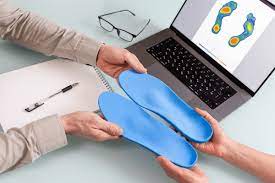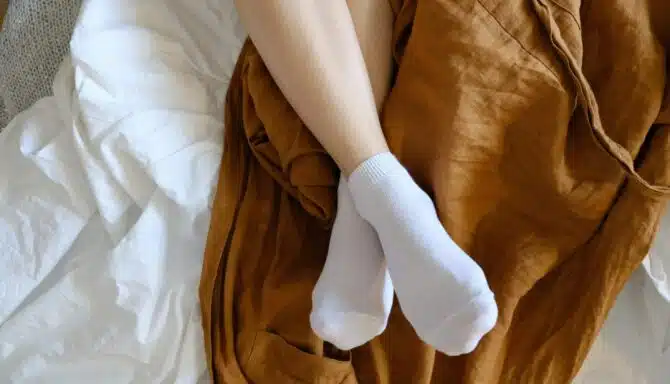There are plenty of positives of winter: snowy walks, cozy evenings by the fireplace, outdoor winter activities and the holidays. One not so great aspect of winter is dry skin.
Dry skin is an uncomfortable condition characterized by scaling, itching, and cracking. It can result from a variety of factors, or be totally natural. Although you can have dry skin anywhere on your body, your feet can be particularly prone to this condition.
Why Dry Skin is Prevalent in Winter
Winter is especially brutal for dry skin. This is the case for a number of reasons:
- Dehydration is more evident in winter
- Indoor heating and showers can dry out the layer of skin that locks in moisture
- Low humidity levels can degrade the skin’s natural moisture barrier. This can lead to flaking and peeling
Generally, humans’ desire to stay warm, either through indoor heating or hot showers, is particularly conducive to having dry skin in the winter. If you’ve ever come inside from the cold and take lengthy hot showers to warm up, you know what we mean.
Beyond peoples’ habits, the environment plays a role. As Harvard Health Publishing explains it, the water content of the epidermis (the outermost layer of skin) tends to reflect the level of humidity around it.
Modify Your Home
Start by optimizing your home environment for the winter. Drier air means drier skin. Using a humidifier in the room that you spend the most time can help prevent your feet from drying out.
Keep the temperature on the cooler side as warmer temperatures will quickly dry out your skin.
Use a Moisturizer
One key component to avoiding dry skin is using moisturizing creams and products. Skin moisturizers specifically rehydrate the epidermis (the outermost of the three layers that make up the skin) and seal in the moisture. As a general rule of thumb, the thicker and greasier a moisturizer, the more effective it is. For example, petroleum jelly and moisturizing oils are highly effective as they help prevent water loss.
Use moisturizing products in damp conditions (like after taking a bath, or a shower) to seal in the water. By moisturizing your skin, you can help prevent calluses, blisters, and cracked heels.
Products we carry in-store here at Toronto’s Feet First Clinic include:
- Gehwol Fusskraft Herbal Lotion Spray
- Dermal Therapy Heel Care Cream
- Gehwol Refreshing Foot Bath
- Gehwol Fusskraft Soft Feet Cream
Visit the clinic any time – no appointment required – for a wide selection of skincare products, footwear, and footcare products.
Skin Ageing and Dryness
Your skin gets drier as you age. It’s inevitable. In fact, more than 75% of people over age 64 have dry skin.
Dry skin and ageing are related through a number of factors: cumulative effects of the sun over time as sun damage can thin the skin’s layer that absorbs moisture, and the production of natural oils slows as we age. Generally, dry skin doesn’t cause serious foot or skin conditions, but they can. These conditions can include chronic eczema, bleeding, or even bacterial infection.
Cracked Heels
Cracked heels are another side effect of ageing. When the skin on the bottom of your heels becomes overly dry, it can split and crack. This condition is known as Cracked Heels. These fissures can be painful and bleed. If they persist, your heels can become infected.
What You Can do About Dry Skin
Combat dry skin this winter by incorporating (or avoiding) some of these habits into your routine:
- Use a humidifier in the winter
- Limit yourself to 5-10-minute baths or showers
- Use lukewarm water rather than hot water
- Minimize your use of soaps. Alternatively, use moisture-rich hygiene products
- Avoid deodorant soaps, perfumed soaps, and alcohol products
- Use bath oils
- Use moisturizer immediately after bathing or after washing your hands
- To reduce the greasy feel of petroleum jelly and thick creams, rub a small amount in your hands, and then rub it over the affected areas until neither your hands nor the affected areas feel greasy.
- Avoid scratching or itching dry areas
- Use sunscreen in the winter (not just in the summer)
- Use a cream or gel a few minutes before shaving
- Avoid fabric softeners and use fragrance-free laundry detergents
We Can Help With All of Your Foot and Skincare Needs
We’re confident in our ability to help inform you and solve your concern with the least amount of discomfort possible. Call us to inquire about any concerns or questions you have and we’d be happy to point you in the right direction!
Call us at 416-769-3338 or Click Above to Book Your Assessment Today!













